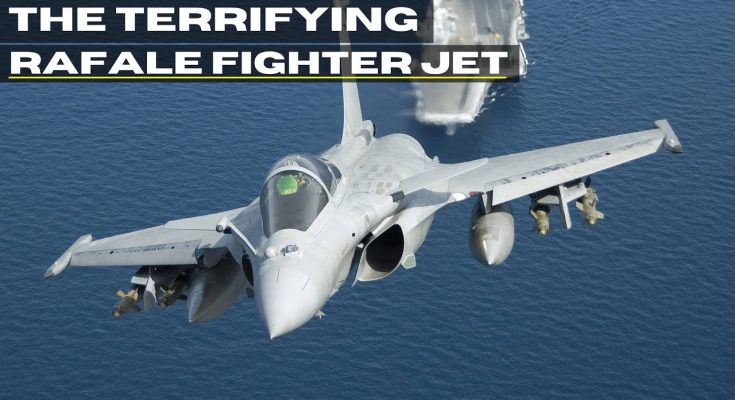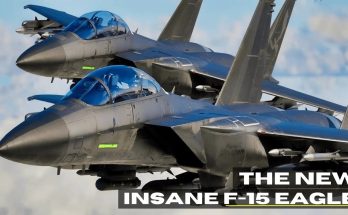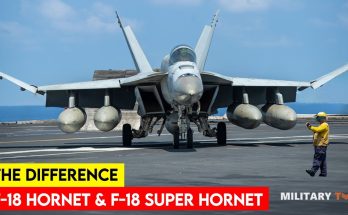The Dassault Rafale, a French-made multirole fighter aircraft, has become one of the most formidable and respected combat aircraft in the world since its introduction in the early 2000s. Known for its agility, versatility, and advanced technology, the Rafale has earned a reputation that makes it a highly effective tool in modern warfare, and more importantly, a plane that no nation would want to engage in a fight with. Here’s why:
1. Exceptional Multirole Capabilities
One of the most defining features of the Rafale is its multirole capability. It is designed to perform a wide variety of missions, including air superiority, ground attack, nuclear deterrence, and maritime strike. Whether it’s engaging in dogfights with enemy fighters, conducting precision bombing missions, or providing close air support for ground troops, the Rafale excels in all these areas. This adaptability allows the aircraft to be effective across various operational theaters, making it difficult for adversaries to pinpoint its weaknesses.
2. Advanced Radar and Sensor Systems
The Rafale is equipped with some of the most sophisticated radar and sensor systems available. Its RBE2 AA radar, an active electronically scanned array (AESA) radar, provides it with exceptional detection and tracking capabilities, even in environments where radar jamming is employed. This means the Rafale can track multiple targets at long ranges while minimizing its own radar signature. Additionally, its Spectra electronic warfare system enhances its survivability by providing advanced jamming, countermeasures, and threat detection capabilities, allowing the aircraft to evade enemy radar and missiles with ease.
3. Outstanding Maneuverability
The Rafale is renowned for its agility and maneuverability, particularly in air-to-air combat. The aircraft’s delta wing design combined with advanced fly-by-wire technology allows it to perform tight turns and high-speed maneuvers with exceptional precision. In a dogfight, where agility can be the deciding factor, the Rafale’s ability to outmaneuver adversaries gives it a significant advantage. Its design also allows it to operate from smaller airstrips, further enhancing its tactical flexibility.
4. Superior Weaponry
The Rafale’s ability to carry a wide range of air-to-air and air-to-ground weapons is a key part of its effectiveness. It can carry MICA air-to-air missiles, Scalp EG cruise missiles, AASM precision-guided bombs, and even nuclear weapons, making it a potent force in multiple domains. The aircraft’s integration with stealthy weapons and its ability to conduct precision strikes allows it to take on high-value targets with devastating accuracy. Moreover, the Rafale can engage targets while maintaining a significant standoff distance, reducing its exposure to enemy defenses.
5. Stealth Features
While not a fully stealth aircraft, the Rafale incorporates several stealth-like features that improve its survivability in contested airspace. Its reduced radar cross-section (RCS), advanced electronic warfare systems, and ability to operate at both low and high altitudes help it avoid detection by enemy radars. These attributes make it more difficult for adversaries to engage the Rafale, especially in complex environments with integrated air defense systems.
6. Combat-Proven and Tested
The Rafale has proven itself in numerous real-world combat scenarios. It has seen action in Afghanistan, Libya, Iraq, and Syria, where it has demonstrated its ability to perform under pressure. Its combat record adds to its reputation as a reliable and formidable opponent. The aircraft’s operational history has provided invaluable lessons in both conventional and unconventional warfare, which only enhances its capability to dominate in future conflicts.
7. Strategic Partnership and Export Success
The Rafale’s success on the international market further highlights its superiority. Countries such as India, Egypt, Qatar, and UAE have all chosen to buy Rafales, reinforcing its credibility as a cutting-edge fighter. The Rafale’s export success stems not just from its capabilities, but also from France’s commitment to long-term support and technology transfer, making it an attractive option for nations seeking to strengthen their air forces.
Conclusion
The Rafale is a fighter aircraft that combines multirole versatility, advanced technology, superior maneuverability, and combat-proven effectiveness, making it one of the most formidable planes in the sky. Nations fear engaging with the Rafale because it is equipped to counter a wide array of threats, is highly survivable in modern combat environments, and has the firepower and agility to dominate adversaries. Its ability to perform across multiple mission types, combined with its reputation and advanced systems, ensures that no nation wants to fight it—because doing so would mean facing one of the most advanced and versatile fighters in the world.



